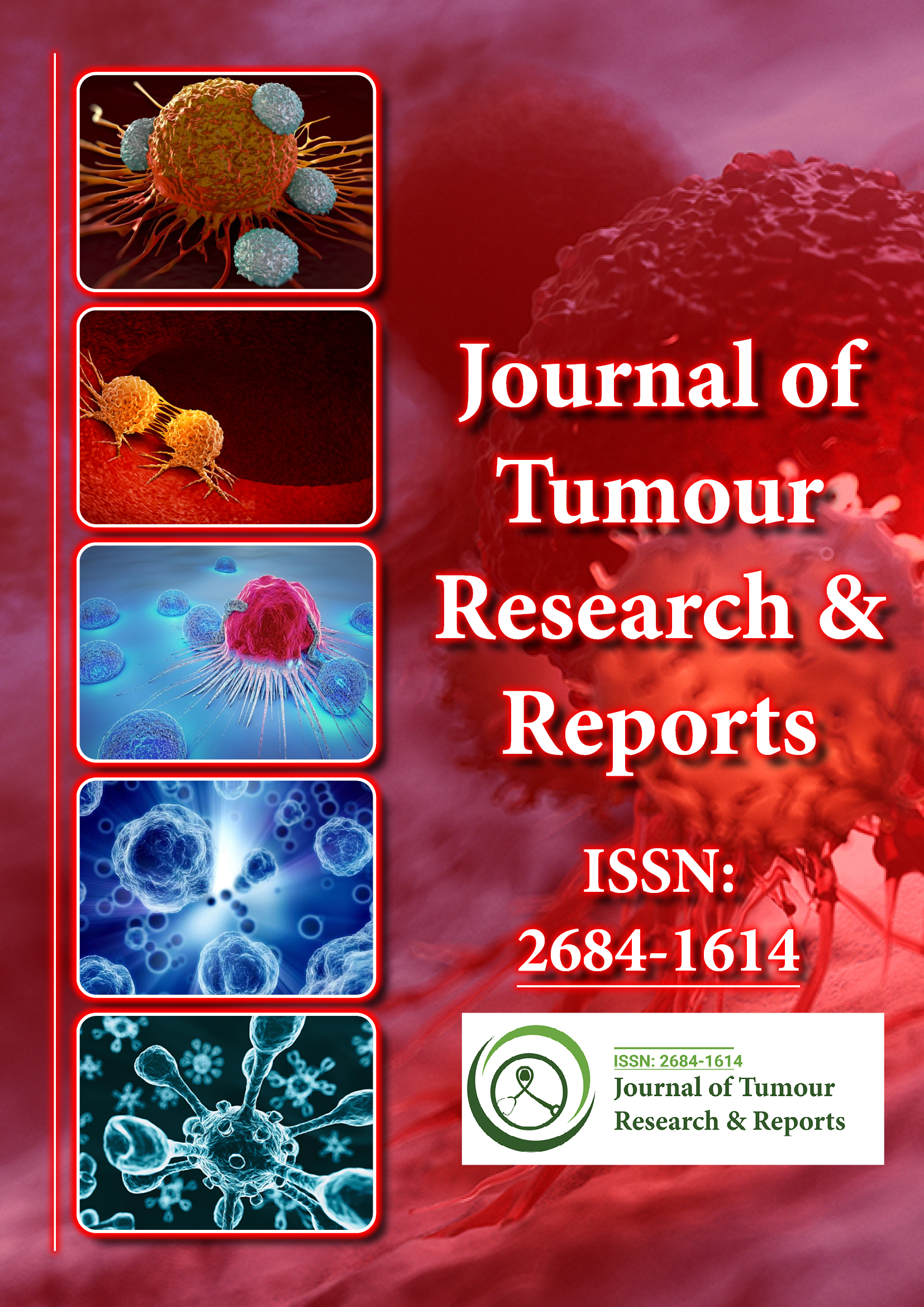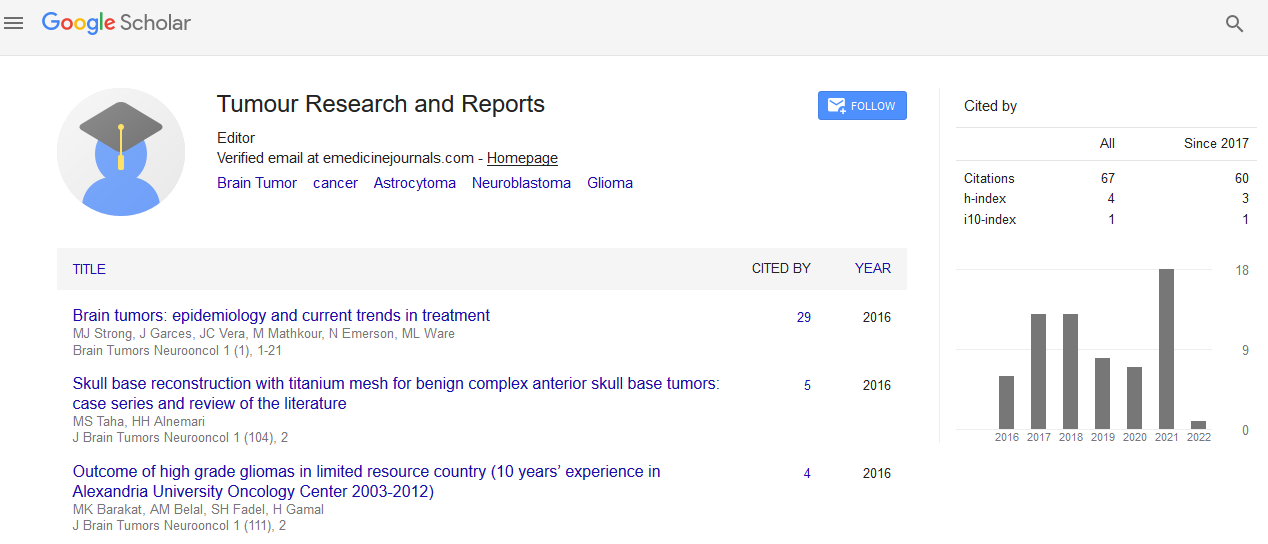Indexed In
- RefSeek
- Hamdard University
- EBSCO A-Z
- Google Scholar
Useful Links
Share This Page
Journal Flyer

Open Access Journals
- Agri and Aquaculture
- Biochemistry
- Bioinformatics & Systems Biology
- Business & Management
- Chemistry
- Clinical Sciences
- Engineering
- Food & Nutrition
- General Science
- Genetics & Molecular Biology
- Immunology & Microbiology
- Medical Sciences
- Neuroscience & Psychology
- Nursing & Health Care
- Pharmaceutical Sciences
Opinion Article - (2025) Volume 10, Issue 1
Immunotherapy Resistance in Melanoma: Mechanisms and Emerging Strategies
Felix Johansson*Received: 03-Mar-2025, Manuscript No. JTRR-25-29016; Editor assigned: 05-Mar-2025, Pre QC No. JTRR-25-29016 (PQ); Reviewed: 19-Mar-2025, QC No. JTRR-25-29016; Revised: 26-Mar-2025, Manuscript No. JTRR-25-29016 (R); Published: 02-Apr-2025, DOI: 10.35248/2684-1614.25.10.247
Description
Melanoma, a malignant tumor originating from melanocytes, has seen remarkable progress in treatment outcomes over the past decade due to the advent of Immune Checkpoint Inhibitors (ICIs). Agents targeting Cytotoxic T-Lymphocyte-Associated Protein 4 (CTLA-4) and Programmed Death-1 (PD-1) have transformed metastatic melanoma from a largely terminal condition to a disease with curative potential for some patients. Despite this revolution in cancer therapy, a significant proportion of melanoma patients exhibit primary resistance or develop acquired resistance to immunotherapy, limiting long-term effectiveness. Understanding the biological mechanisms behind this resistance is crucial for the development of more effective treatment strategies.
Primary resistance, wherein patients do not respond to ICIs from the outset, is believed to be driven by several intrinsic and extrinsic tumor factors. Tumors with low mutational burden often produce fewer neoantigens, reducing their visibility to the immune system. In addition, the absence of pre-existing Tumor- Infiltrating Lymphocytes (TILs), a phenomenon referred to as a “cold” tumor microenvironment, is associated with poor response. Melanomas lacking expression of Major Histocompatibility Complex (MHC) class I molecules or those with impaired antigen processing machinery further evade immune detection.
Extrinsic factors include immunosuppressive cells in the tumor microenvironment such as regulatory T cells (Tregs), Myeloid- Derived Suppressor Cells (MDSCs), and Tumor-Associated Macrophages (TAMs) skewed toward an M2 phenotype. These cells release inhibitory cytokines like TGF-β and IL-10, and express checkpoint ligands that blunt the activation and proliferation of cytotoxic T cells. Moreover, persistent activation of oncogenic pathways, such as Wnt/β-catenin, can inhibit the recruitment of dendritic cells, essential for T-cell priming, further impairing the immune response.
Acquired resistance, on the other hand, emerges after an initial favorable response to ICIs and often leads to tumor relapse. Genetic alterations acquired during treatment can result in loss of neoantigens or mutations in key genes involved in interferon signaling (e.g., JAK1, JAK2) and antigen presentation (e.g., B2M). These mutations make tumor cells less susceptible to immune-mediated destruction despite continued presence of activated T cells. Furthermore, chronic antigen exposure and constant stimulation of T cells can lead to T-cell exhaustion, marked by upregulation of multiple inhibitory receptors and loss of effector function.
To address these challenges, researchers and clinicians are developing and testing a variety of novel strategies. One approach is the use of combination immunotherapies, such as dual blockade of CTLA-4 and PD-1, which has shown superior efficacy in selected patient subsets. However, this comes at the cost of increased immune-related adverse events, necessitating careful patient selection and management.
Targeting additional immune checkpoints beyond CTLA-4 and PD-1, such as LAG-3, TIM-3, and TIGIT, is gaining momentum. LAG-3 inhibitors, in particular, have demonstrated promise in clinical trials and may reinvigorate exhausted T cells when used in combination with existing ICIs. Moreover, the use of oncolytic viruses like talimogene laherparepvec (T-VEC) can convert immunologically "cold" tumors into "hot" ones by promoting local inflammation and antigen release, thus enhancing the effectiveness of immunotherapy.
Another area of exploration involves personalized cancer vaccines and neoantigen-based therapies. By sequencing a patient's tumor and identifying unique mutations, individualized vaccines can be designed to elicit robust T-cell responses specific to tumor antigens. These vaccines, when used in combination with ICIs, may improve response rates and prevent immune escape.
Adoptive cell therapies, such as Tumor-Infiltrating Lymphocyte (TIL) therapy and engineered T-Cell Receptor (TCR) or Chimeric Antigen Receptor (CAR) T cells, are also being tested in melanoma. While CAR-T cell therapy has been largely successful in hematological malignancies, its translation to solid tumors like melanoma presents challenges due to antigen heterogeneity and the immunosuppressive microenvironment. J Tum Res Reports, Vol.10 Iss.1 No:1000247 2 Nevertheless, advances in gene editing and cell expansion techniques are fueling ongoing clinical investigations.
Citation: Johansson F (2025). Immunotherapy Resistance in Melanoma: Mechanisms and Emerging Strategies. J Tum Res Reports. 10:247.
Copyright: © 2025 Johansson F. This is an open-access article distributed under the terms of the Creative Commons Attribution License, which permits unrestricted use, distribution, and reproduction in any medium, provided the original author and source are credited.

